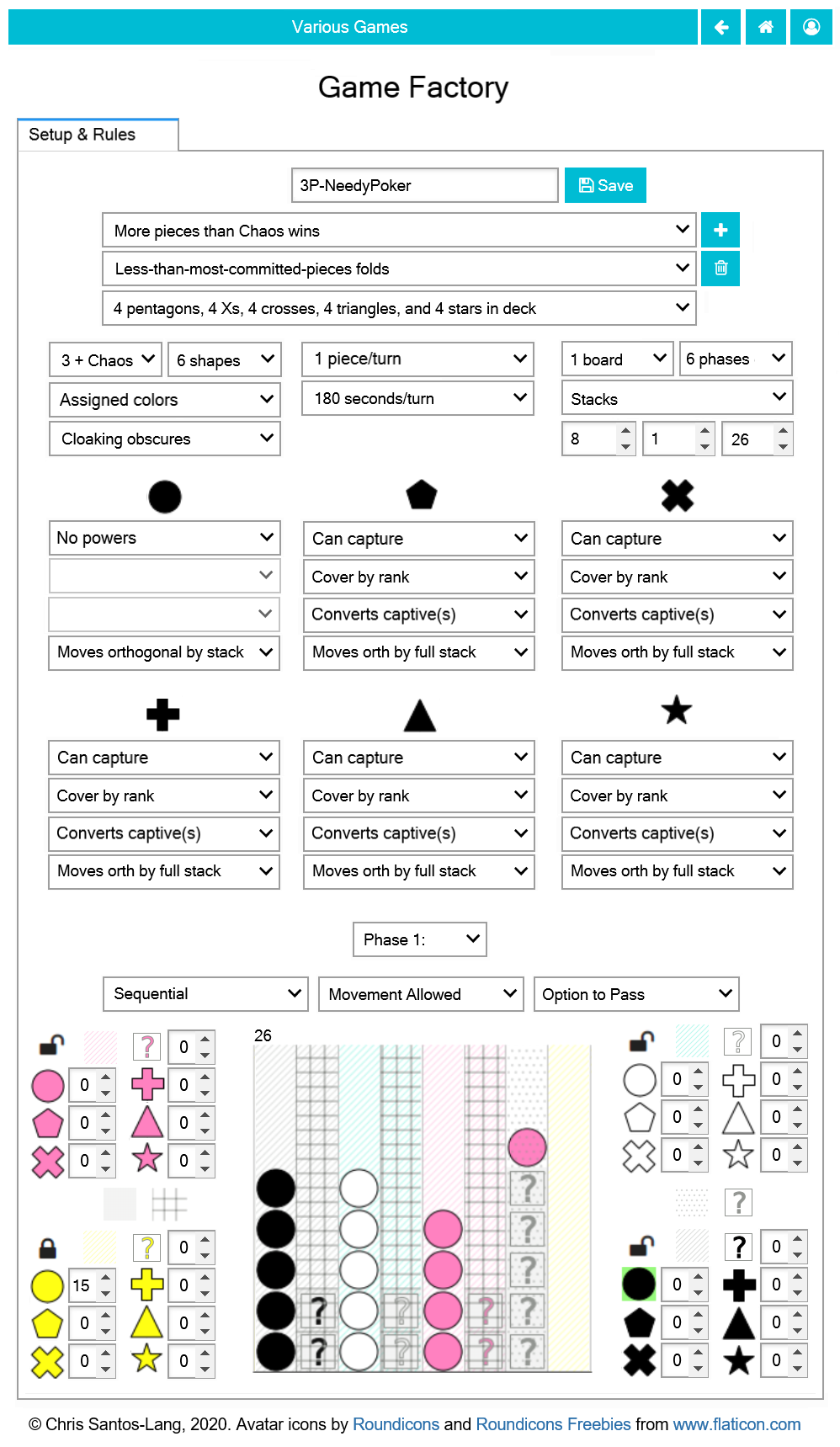Creating Games
Clicking the Copy button on the Step & Rules Tab or Events Tab of a game yields a new copy that can be altered (until first saved):

In addition to specifying reserves and initial piece placement (which can include pieces dealt from a shuffled deck), the creator can designate spaces as exclusive to specific players or as “sticky” (no exit). Each phase can be sequential, simultaneous, or single (which is simultaneous, but last only one turn), can lock specific players, and can lock or cloak specific spaces. Each shape of piece can have its own power and way of moving (or not).
A few options deserve special explanation:
Instead of 2 Player, 3 Player or 4 Player, a game can be Partners (odd vs. even), 2 + Chaos or 3 + Chaos. “Chaos” is a randomized common-enemy. 4 Player games can have an “Overachiever(s) disqualified” rule that disqualifies the first player(s) to qualify as winners from actually winning.
“Fold” rules are checked at the end of each phase. If a player other than “Chaos” folds, then that players is locked for the rest of the match (but remains eligible to win).
Instead of the Hash used in Tic-Tac-Toe, the board can be Squares of various dimension or Stacks for which pieces can be placed or moved only to/from the tops. Pieces that move by stack bring all pieces above them along for the ride. Pieces that move by full stack always bring the entire stack.
Intead of destroy, the effect of capture can be to convert which changes the color of captives to match their captor, to reincarnate which converts and moves the captured pieces to the captor’s reserves, or to reincarnate (x2) which reincarnates but multiplies the captives.
Pieces with the chain-jump power can make multiple jumps in a row in a single turn. When pieces with the cover by rank power cover (or are covered by) other pieces, the piece with the highest rank captures the rest. All are destroyed if the ranks are equal. Pentagon outranks star which outranks cross which outranks X which outranks triangle which outranks circle (but circle outranks pentagon and only pentagon). When pieces that move by stack cover by rank, the rank is a combined rank of all pieces of that color in the final stack plus any communal pieces in the final stack (ignoring any pieces of the lowest possible rank). Highest-5-of-a-shape outranks highest-4-of-a-shape which outranks highest-5-straight which outranks highest-full-house (i.e. three-of-a-shape-plus-pair) which outranks highest-4-straight which outranks highest-3-of-a-shape which outranks highest-2-pair which outranks highest-3-straight which outranks highest-pair which outranks highest-2-straight which outranks highest-singleton.
All social behavior can be modelled via games, and special effort has been made to ensure that users can construct games of each kind in economic game theory (e.g. Public Goods, Prisoner Dilemma, Stag Hunt, Ultimatum, Volunteer, Battle of the Sexes, Dictator, Trust, Beer-Quiche, etc.). Please let us know if there is a kind of game that cannot be constructed.